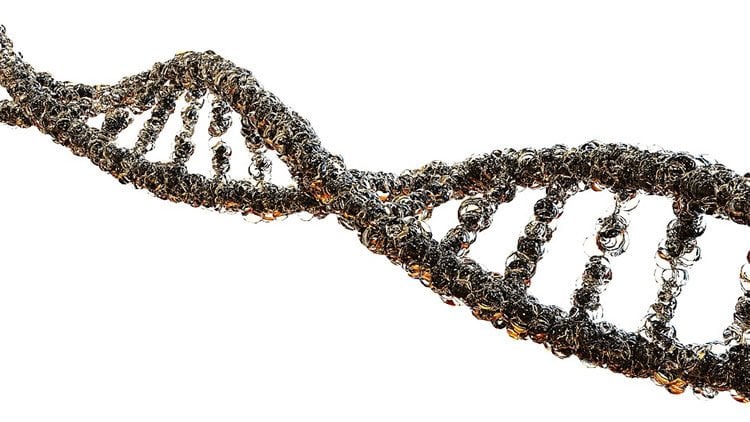Summary: Researchers establish SCN3A genetic mutations cause infantile epileptic encephalopathy.
Source: CHOP.
Researchers have discovered a “missing mutation” in severe infant epilepsy–long-suspected genetic changes that might trigger overactive, brain-damaging electrical signaling leading to seizures They also found early indications that specific anti-seizure medications might prevent disabling brain injury by controlling epilepsy during a crucial period shortly after birth.
“These are still early days, but we may be able to use this knowledge to protect the newborn brain and improve a child’s long-term outcome,” said study leader Ethan M. Goldberg, MD, PhD, a pediatric neurologist at Children’s Hospital of Philadelphia.
Goldberg collaborated with European and American researchers in this neurogenetic study of early infantile epileptic encephalopathy, published online Feb. 21, 2018 in Annals of Neurology.
The study focused on mutations in the gene SCN3A. Scientists already knew that the gene had a pattern of high expression in the brain, before and shortly after birth. Variants in SCN3A had also been previously linked to less severe forms of epilepsy, but the current research solidified this link and was the first to establish that SCN3A mutations cause the severe infantile form.
The gene regulates sodium channels that allow sodium ions into brain cells: “sodium influx underlies action potentials, which are the currency of information transfer in the brain,” said Goldberg. Of four sodium ion channels predominantly expressed in the brain, he added, scientists had discovered that gene mutations in three of those channels already had a clear role in causing forms of epilepsy. Only one channel, called Nav1.3, encoded by the SCN3A gene, had not previously been linked to epilepsy, and hence was the “missing channel.” The new research implicated novel SCN3A mutations in severe childhood epilepsy, joining the other brain-expressed sodium channels as causes of early infantile epileptic encephalopathy.
“We identified gain-of-function mutations in SCN3A,” said Goldberg. “These mutations generate increased channel activity that leaves the ion channel stuck open and leaking current. This overactivity, in turn, leads to epileptic encephalopathy–the most severe type of childhood epilepsy.”
The study team reported on a cohort of four unrelated children from different countries, all of whom had severe epilepsy. Their epilepsy had a particularly early onset, within the first two weeks of life. For the children, the results were devastating: severe to profound developmental delay, seizures that did not respond to medication and lifelong disability.
The researchers used whole-exome sequencing to pinpoint mutations in SCN3A. The mutations were de novo–present in the affected children, but not inherited from the parents. Cell studies, including electrophysiological recordings, revealed detailed properties of the electrical signaling.

Further cell culture studies also showed that existing anti-seizure medications, lacosamide and phenytoin, selectively inhibited the persistent current in mutant ion channels–suggesting a possible future therapy for this condition.
Translating these findings into potential clinical treatments, Goldberg stressed, will require considerable further research–both in nerve cells and in future animal models, in which neurologists can test possible precision-medicine treatments for safety and efficacy before they can be investigated in patients. In addition, the current research allowed the SCN3A gene to be added to an existing diagnostic test, CHOP’s Epilepsy Panel, which uses next-generation sequencing to rapidly test for over 100 genetic causes of childhood epilepsy.
Precise, early diagnosis, added Goldberg, will be crucial, because of the highly regulated timetable of early-life neurological events. “The mutation’s activity in the Nav1.3 sodium ion channel occurs during a short period in newborns, but if we can intervene during that window, we may be able to help prevent long-term neurological injury and benefit patients,” he said.
Funding: Funding support for this study came from the National Institutes of Health (grant NS097633) and the Burroughs Wellcome Fund Career Award for Medical Scientists.
Source: John Ascenzi – CHOP
Publisher: Organized by NeuroscienceNews.com.
Image Source: NeuroscienceNews.com image is in the public domain.
Original Research: Abstract in Annals of Neurology.
doi:10.1002/ana.25188
[cbtabs][cbtab title=”MLA”]CHOP “‘Missing Mutation’ Found in Severe Infant Epilepsy.” NeuroscienceNews. NeuroscienceNews, 20 March 2018.
<https://neurosciencenews.com/infant-epilepsy-missing-mutation-8677/>.[/cbtab][cbtab title=”APA”]CHOP (2018, March 20). ‘Missing Mutation’ Found in Severe Infant Epilepsy. NeuroscienceNews. Retrieved March 20, 2018 from https://neurosciencenews.com/infant-epilepsy-missing-mutation-8677/[/cbtab][cbtab title=”Chicago”]CHOP “‘Missing Mutation’ Found in Severe Infant Epilepsy.” https://neurosciencenews.com/infant-epilepsy-missing-mutation-8677/ (accessed March 20, 2018).[/cbtab][/cbtabs]
Abstract
Mutations in SCN3A cause early infantile epileptic encephalopathy
Objective: Voltage‐gated sodium (Na+) channels underlie action potential generation and propagation and hence are central to the regulation of excitability in the nervous system. Mutations in the genes SCN1A, SCN2A, and SCN8A, encoding the Na+ channel pore‐forming (α) subunits Nav1.1, 1.2, and 1.6, respectively, and SCN1B, encoding the accessory subunit β1, are established causes of genetic epilepsies. SCN3A, encoding Nav1.3, is known to be highly expressed in brain, but has not previously been linked to early infantile epileptic encephalopathy. Here, we describe a cohort of four patients with epileptic encephalopathy and heterozygous de novo missense variants in SCN3A (p.Ile875Thr in two cases, p.Pro1333Leu, and p.Val1769Ala).
Methods: All patients presented with treatment‐resistant epilepsy in the first year of life, severe to profound intellectual disability, and, in two cases (both with the variant p.Ile875Thr), diffuse polymicrogyria.
Results: Electrophysiological recordings of mutant channels revealed prominent gain of channel function, with a markedly increased amplitude of the slowly inactivating current component, and, for two of three mutants (p.Ile875Thr and p.Pro1333Leu), a left‐shift in the voltage dependence of activation to more hyperpolarized potentials. Gain of function was not observed for Nav1.3 variants known or presumed to be inherited (p.Arg1642Cys and p.Lys1799Gln). The anti‐seizure medications phenytoin and lacosamide selectively blocked slowly inactivating over transient current in wild‐type and mutant Nav1.3 channels.
Interpretation: These findings establish SCN3A as a new gene for infantile epileptic encephalopathy and suggest a potential pharmacologic intervention. These findings also reinforce the role of Nav1.3 as an important regulator of neuronal excitability in the developing brain while providing additional insight into mechanisms of slow inactivation of Nav1.3.







